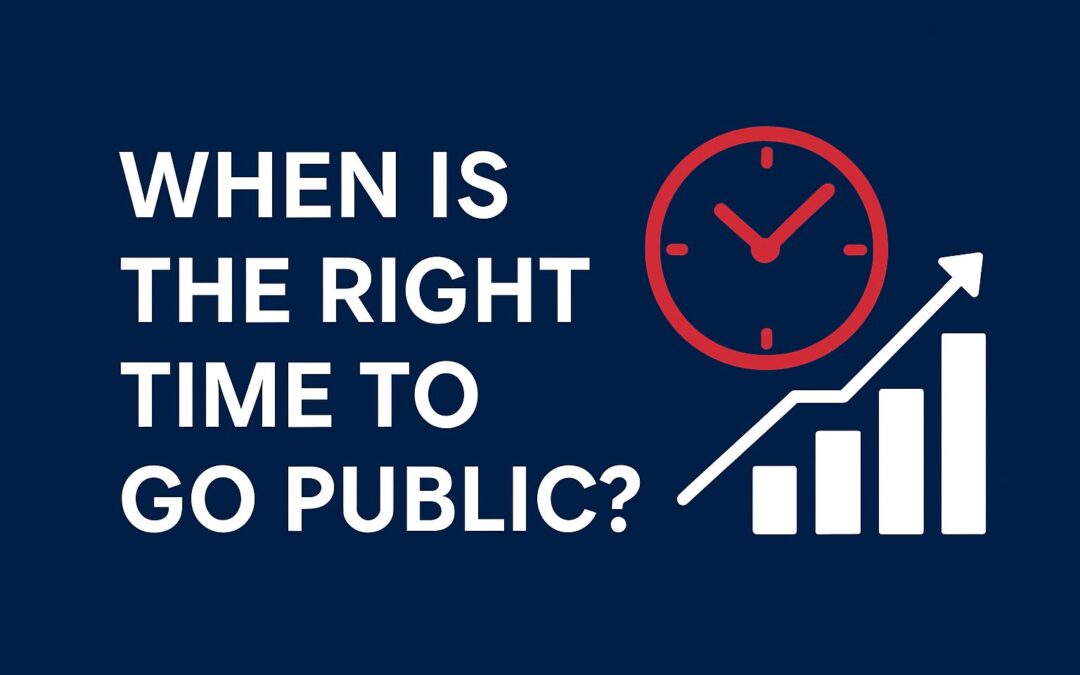How to Know If You’re Really Ready for the Public Markets
Why This Matters
Timing is one of the most common—and misunderstood—questions in any go-public conversation. Founders often ask: “Should we go now or wait?” But what they’re really asking is, “Are we ready?”
The truth is, there’s no perfect window. Canadian public markets are open year-round, and vehicles like RTOs, CPCs, and direct listings make it possible to list even in uncertain conditions. What matters most is internal readiness—not market timing.
The Wrong Way to Think About Timing
Many companies tie their go-public plans to external events:
- The market is hot for our sector
- A competitor just listed and raised $10 million
- We need visibility before launching our next product
- Our investors are pushing for liquidity
While these factors may influence urgency, they shouldn’t drive the decision alone. A public listing amplifies everything—your narrative, your numbers, your operational strengths and weaknesses. Going public before you’re ready can lock in valuation ceilings, attract regulatory scrutiny, or create reputational drag that’s hard to shake.
The Right Way to Think About Timing
Ask yourself:
- Is our business model understandable to investors?
- Can we tell a credible 12–24 month growth story?
- Are our financials audit-ready under IFRS?
- Do we have the internal controls and team to handle public company obligations?
- Are we doing this because it aligns with our long-term capital strategy?
These are signals of readiness. The best time to go public is when you can support your own story—not just pitch it.
3 Types of Readiness That Matter
1. Financial Readiness
This means audited financials for the required period (2–3 years), accounting policies aligned with IFRS, and the ability to prepare MD&A and interim filings consistently. It also includes pro forma financials if acquisitions are involved.
2. Operational Readiness
Public companies need to file on time, manage governance policies, respond to regulators, and maintain public disclosure. If your back office is already stretched, going public could overwhelm your systems—and your team.
3. Strategic Readiness
Do you actually need to be public? Will the listing help you raise capital, attract partners, or make acquisitions? Or are you hoping the listing itself will “unlock” value?
Public listings are platforms, not catalysts. They work best when you already have a strategy—and just need the capital or visibility to scale it.
Founders Often Miss This
Being “early” is not always a virtue. Some of the worst-performing public companies in Canada were rushed to market without sufficient preparation, pressure-tested systems, or investor alignment. Once listed, they struggle to maintain interest, deliver results, or raise follow-on capital.
In contrast, companies that waited until their foundation was strong—even if the market wasn’t booming—often outperform their peers. Investors care more about what happens post-listing than how fast you got there.
Closing Thought
Going public isn’t about catching a wave—it’s about knowing your own current. When the business, the team, and the capital strategy align, the path forward becomes clear. Until then, preparation isn’t a delay—it’s a competitive advantage.
For more insight on timing your go-public transaction in Canada, contact us.

